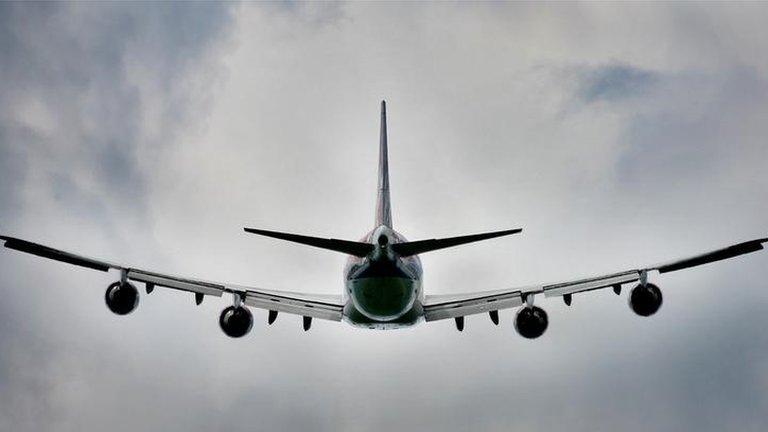Grounded: The chequered history of UK airport expansion
- Published

London Airport at Heathrow began commercial operations in 1946
"It's like deja vu, all over again," baseball coach Yogi Berra once famously said.
And you'd be forgiven for thinking the same about UK airport expansion. We always seem to have been here before.
Ever since Gatwick and Heathrow airports opened for business in the Thirties and Forties, arguments have raged over how best to cater for Britain's burgeoning demand for air travel.
The debates seem endless and progress has been bedevilled by politics.
Recent history is littered with inquiries, commissions, consultations, studies and reports resulting in very little, but costing taxpayers millions.
Here's a reminder of UK aviation's chequered history.
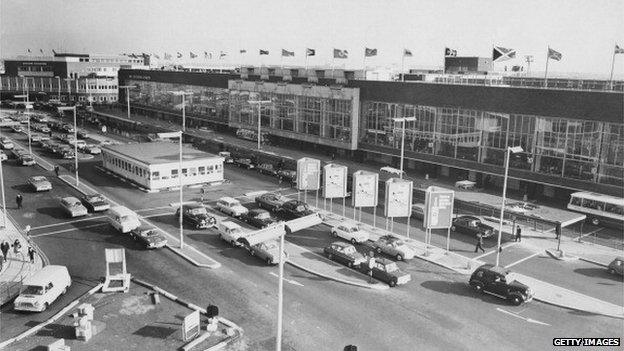
In 1965, London Airport (later named Heathrow) looked a lot different than it does today
1968
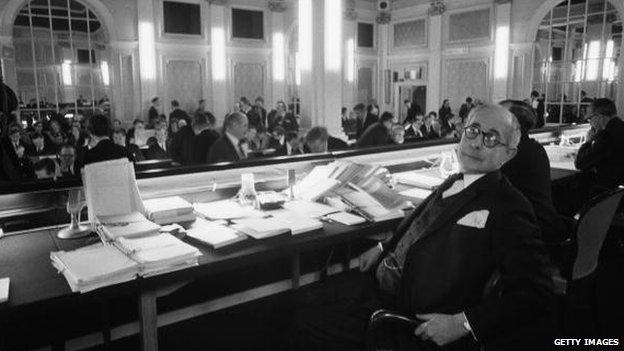
Lord Justice Roskill's Commission recommended Cublington, Buckinghamshire, as the location for a third London Airport
The Wilson government sets up the Roskill Commission to look into the pros, cons and costs of a third London airport. Two years and many hundreds of pages later, the Commission recommends Cublington in rural Buckinghamshire as the best location for a new airport. The burghers of Bucks are not best pleased: beacons burn on hilltops and church bells peal across the county in protest. Ironically, Roskill dismisses Stansted as a location.
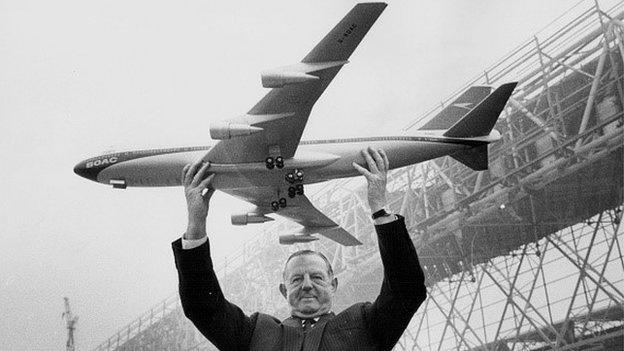
In 1969, BOAC boss Keith Granville holds up a model of the new Boeing 747. But where are the new runways?
1971
The recommendation is roundly dismissed by the new Heath government, which instead plumps for another Roskill option, Maplin Sands, Foulness - mudflats in the Thames Estuary near Southend-on-Sea, Essex. The idea was to build on the reclaimed land, but it was the most expensive of Roskill's four recommendations.
1974
The Maplin Sands idea slides into the sea. The previous year's embargo by Arab oil producers - known as the 1973 oil crisis - sends shockwaves through the global economy and fuel costs rocketing. The need to reduce costs becomes a priority. Good news for wading birds; bad news for ousted prime minister Ted Heath. Meanwhile, France opens its shiny new Charles-de-Gaulle four-runway airport near Paris. Sacre bleu.
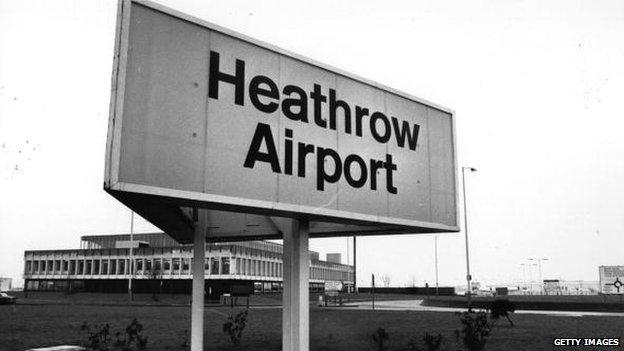
In 1978, the Callaghan government admitted that Heathrow's capacity was "restricted"
1978/9
The Callaghan government's aviation white paper identifies Heathrow capacity as "restricted", and the following year the incoming Thatcher government decides against building a new international airport, despite acknowledging that "Heathrow capacity is virtually exhausted…" Instead, it envisages developing regional airports and expanding Heathrow, Gatwick and Stansted "as the traffic develops". Heathrow Terminal 4 opens in 1986.
1990
The government commissions a new study into airports called the Runway Capacity in the South East Study. Three long years later it concludes that expanding Heathrow "would afford the greatest benefits" and British Airways backs the idea of an extra runway. No extra runway materialises.
1995
Secretary of State for Transport Brian Mawhinney rejects proposed new runways for Gatwick and Heathrow but says the government will explore how to squeeze more capacity out of the existing runways.
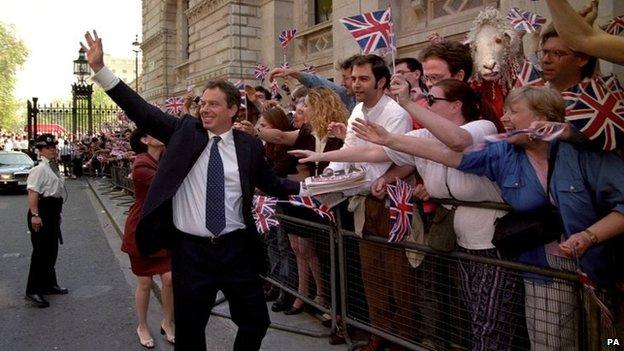
Tony Blair enters Downing Street in 1997: time for a new aviation policy
1998/9
New Blair government, new aviation policy. A Transport White Paper says the government will "prepare a UK airports policy looking some 30 years ahead". This inevitably entails another time-consuming inquiry - the South East of England Regional Air Services Study - exploring how increasing demand for air travel will affect airport capacity. The Department for Transport begins a three-year consultation on The Future of Aviation.
2003
This results in the government's Future of Air Transport White Paper which recommends a third runway at Heathrow - sound familiar? - greater use of Heathrow's existing two runways and possibly an extra three runways at Stansted. Oh, and the previous Tory government's aspiration to expand regional airports. As the UK chases its tail, Amsterdam's Schiphol airport opens its fifth runway.
2007

As Heathrow Terminal 5 opens in 2008, it seems we're better at building terminals than new runways
"Heathrow expansion plans unveiled", external the BBC reports on 22 November 2007. Guess what? They include a third runway and a sixth terminal at Heathrow. With Terminal 5 due to open the following year, it seems we're better at building terminals than runways. Announcing the consultation, the government says any expansion would have to conform to noise and pollution limits - the perennial sticks with which to beat the developers.
2008
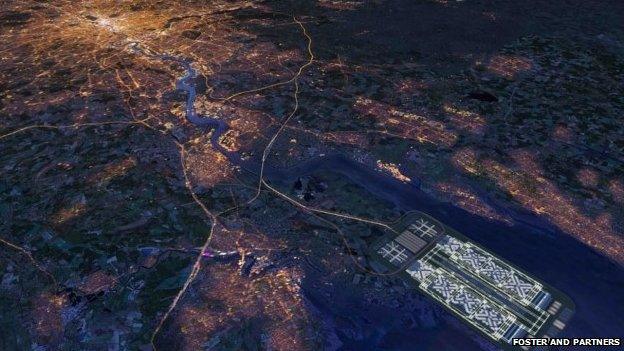
A new airport in the Thames Estuary has often featured in expansion proposals
Mayor of London Boris Johnson proposes a new airport far out in the Thames Estuary at Shivering Sands, subsequently nicknamed Boris Island. Will it fare any better than the other Estuary proposals, normally rejected on cost and environmental grounds?
2009
Gordon Brown's Labour government backs a third runway at Heathrow, but this is opposed by the Conservatives, despite the fact that the first Thatcher government originally supported the idea.
2010
Politics intervenes once again as the new Tory-Liberal Democrat coalition government puts Gordon Brown out to grass. It immediately rules out new runways at Heathrow, Gatwick or Stansted. Back to square one.
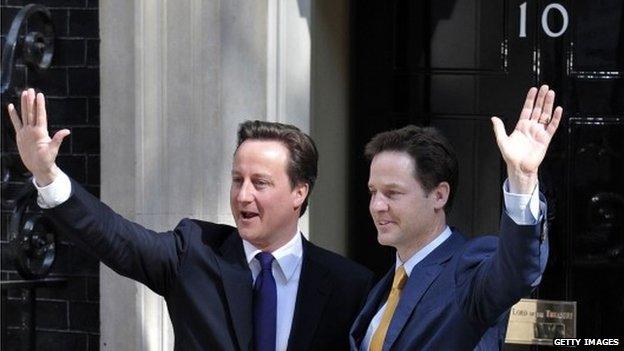
David Cameron (left) and Nick Clegg form a coalition government in 2010 - aviation policy changes again
2011
What happens when there's a new government? A new consultation, this time called a "scoping document" on how to develop a "sustainable framework for UK aviation". Meanwhile, Heathrow is full to bursting, operating at 99.2% capacity. Frankfurt airport opens its fourth runway.
2012
The government launches yet another consultation on the "draft aviation policy framework", and sets up the Airports Commission chaired by economist Sir Howard Davies. The Commission is tasked with assessing what extra capacity UK airports will need and inevitably publishes consultation documents. It's like Groundhog Day.
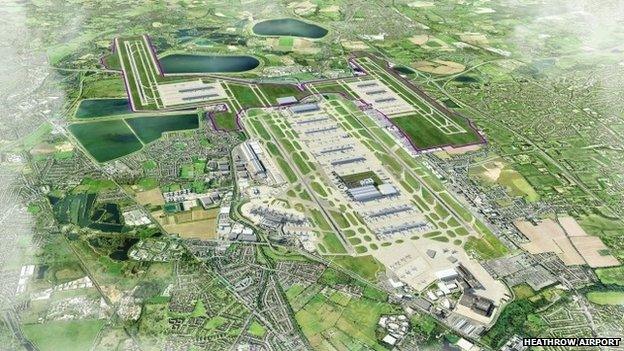
In 2013, Heathrow Airport proposed a four-runway solution to its capacity problems
2013
The Airports Commission shortlists three options to increase capacity, and we're back to the Gatwick and Heathrow new or extended runways idea. The next year, the Boris Island idea is sunk.
2015
Sir Howard publishes his final recommendations. Will the new Conservative government finally grasp the nettle and make a decision or, as history suggests, kick the can further down the road?
As Yogi Berra had it: "The future ain't what it used to be."
- Published29 June 2015
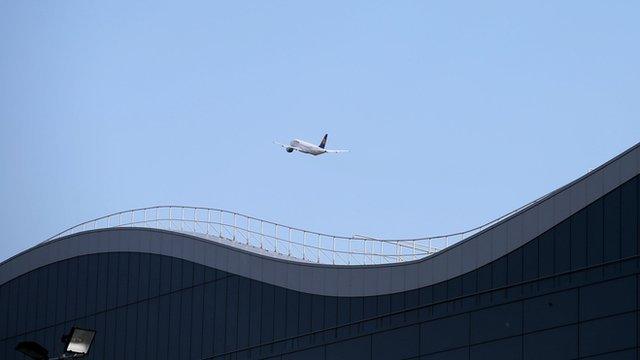
- Published26 June 2015
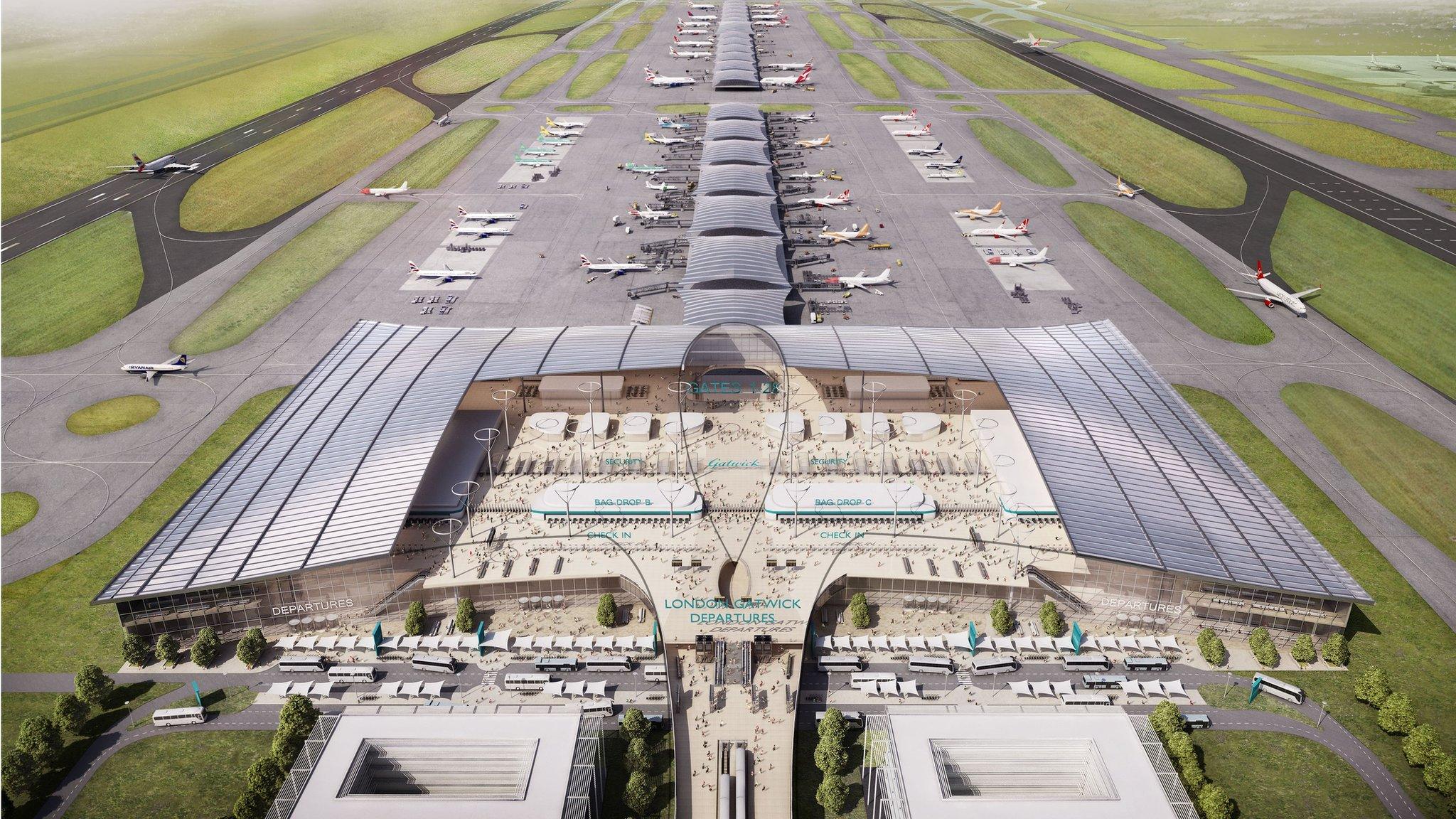
- Published10 June 2015
